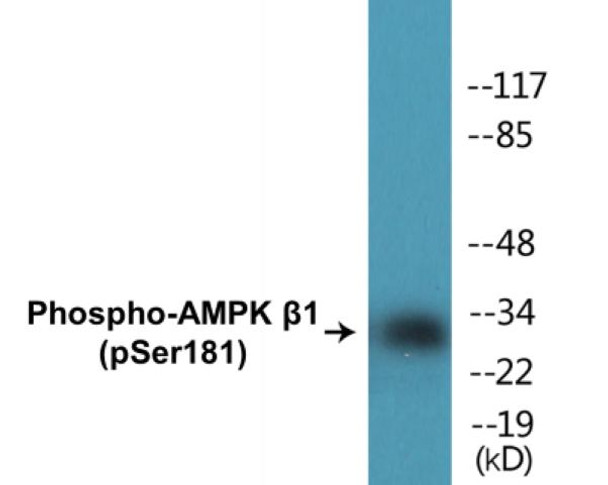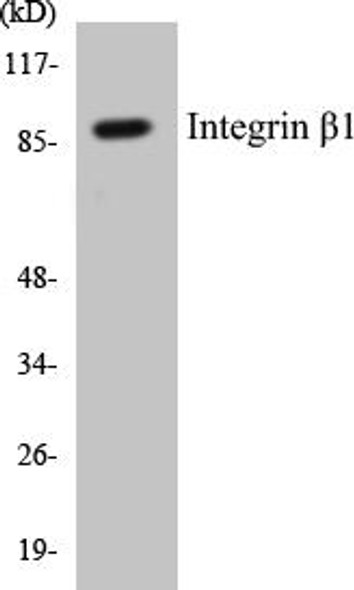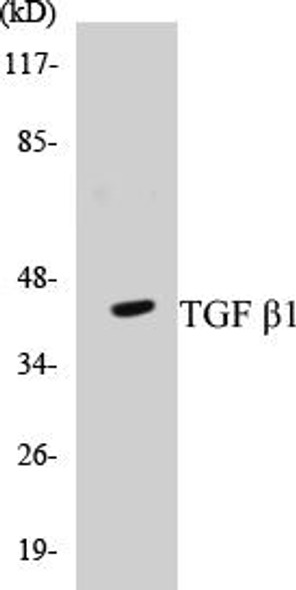AMPK beta1 (Phospho-Ser181) Colorimetric Cell-Based ELISA Kit
- SKU:
- CBCAB01263
- Product Type:
- ELISA Kit
- ELISA Type:
- Cell Based Phospho Specific
- Research Area:
- Metabolism
- Reactivity:
- Human
- Mouse
- Rat
- Detection Method:
- Colorimetric
Description
AMPK beta1 (Phospho-Ser181)Colorimetric Cell-Based ELISA Kit
The AMPK Beta1 (Phospho-Ser181) Colorimetric Cell-based ELISA Kit is specifically designed for the accurate measurement of AMPK Beta1 phosphorylation at Serine 181 in cell lysates. This kit offers high sensitivity and specificity, ensuring precise and reproducible results for researchers in a variety of fields.AMPK Beta1 is a key regulatory protein that plays a critical role in cellular energy homeostasis by regulating processes such as glucose uptake and fatty acid oxidation.
Phosphorylation of AMPK Beta1 at Serine 181 is known to affect its activity, making it an important target for studying metabolic disorders, cancer, and other diseases.With its user-friendly protocol and reliable performance, the AMPK Beta1 (Phospho-Ser181) Colorimetric Cell-based ELISA Kit is an essential tool for researchers looking to better understand the role of AMPK Beta1 phosphorylation in various physiological and pathological conditions.
| Product Name: | AMPK beta1 (Phospho-Ser181) Colorimetric Cell-Based ELISA |
| Product Code: | CBCAB01263 |
| ELISA Type: | Cell-Based |
| Target: | AMPK beta1 (Phospho-Ser181) |
| Reactivity: | Human, Mouse, Rat |
| Dynamic Range: | > 5000 Cells |
| Detection Method: | Colorimetric 450 nm |
| Format: | 2 x 96-Well Microplates |
The AMPK beta1 (Phospho-Ser181) Colorimetric Cell-Based ELISA Kit is a convenient, lysate-free, high throughput and sensitive assay kit that can detect AMPK beta1 protein phosphorylation and expression profile in cells. The kit can be used for measuring the relative amounts of phosphorylated AMPK beta1 in cultured cells as well as screening for the effects that various treatments, inhibitors (ie. siRNA or chemicals), or activators have on AMPK beta1 phosphorylation.
Qualitative determination of AMPK beta1 (Phospho-Ser181) concentration is achieved by an indirect ELISA format. In essence, AMPK beta1 (Phospho-Ser181) is captured by AMPK beta1 (Phospho-Ser181)-specific primary (1ø) antibodies while the HRP-conjugated secondary (2ø) antibodies bind the Fc region of the 1ø antibody. Through this binding, the HRP enzyme conjugated to the 2ø antibody can catalyze a colorimetric reaction upon substrate addition. Due to the qualitative nature of the Cell-Based ELISA, multiple normalization methods are needed:
| 1. | A monoclonal antibody specific for human GAPDH is included to serve as an internal positive control in normalizing the target absorbance values. |
| 2. | Following the colorimetric measurement of HRP activity via substrate addition, the Crystal Violet whole-cell staining method may be used to determine cell density. After staining, the results can be analysed by normalizing the absorbance values to cell amounts, by which the plating difference can be adjusted. |
| Database Information: | Gene ID: 5564, UniProt ID: Q9Y478, OMIM: 602740, Unigene: Hs.6061 |
| Gene Symbol: | PRKAB1 |
| Sub Type: | Phospho |
| UniProt Protein Function: | AMPKB1: a non-catalytic subunit of AMPK, a conserved kinase of the CAMKL family. AMPK is an energy-sensing protein that plays a key role in regulating cellular energy homeostasis. Environmental stress, such as heat shock, nutrient deprivation, hypoxia and ischemia, indirectly activate AMPK by the depletion of cellular ATP and the concomitant rise of ADP and AMP levels. Allosteric activation is achieved primarily by rising ADP levels, and not solely by AMP levels as previously thought. Activates energy-producing pathways and inhibits energy-consuming processes: inhibits protein, carbohydrate and lipid biosynthesis, as well as cell growth and proliferation. AMPK acts via direct phosphorylation of metabolic enzymes, and by longer-term effects via phosphorylation of transcription regulators. Also acts as a regulator of cellular polarity by remodeling the actin cytoskeleton, probably by indirectly activating myosin. AMPK is a heterotrimer of an alpha catalytic subunit (AMPKA1 or -2), a beta (AMPKB1 or -2) and a gamma non-catalytic subunit (AMPKG1, -2 or -3). Different possible combinations of subunits give rise to 12 different holoenzymes. Beta subunits act as scaffolds on which the AMPK complex assembles, via its C-terminus that bridges alpha and gamma subunits. AMPK-beta1 or -beta2 subunits are required for assembling of AMPK heterotrimers and are important for regulating enzyme activity and cellular localization. AMPK beta1beta2 null mouse muscles reveal an essential role for AMPK in maintaining mitochondrial content and glucose uptake during exercise. Phosphorylation by ULK1 and ULK2 inhibits AMPK activity. Hematopoietic AMPKB1 reduces mouse adipose tissue macrophage inflammation and insulin resistance in obesity. |
| UniProt Protein Details: | Protein type:Protein kinase, regulatory subunit; Autophagy Chromosomal Location of Human Ortholog: 12q24.1-q24.3 Cellular Component: nucleus; cytosol; AMP-activated protein kinase complex Molecular Function:AMP-activated protein kinase activity; protein binding; protein kinase binding; protein kinase activity Biological Process: mitochondrion organization and biogenesis; protein heterooligomerization; organelle organization and biogenesis; insulin receptor signaling pathway; cell cycle arrest; signal transduction; regulation of protein kinase activity; protein amino acid phosphorylation; fatty acid biosynthetic process |
| NCBI Summary: | The protein encoded by this gene is a regulatory subunit of the AMP-activated protein kinase (AMPK). AMPK is a heterotrimer consisting of an alpha catalytic subunit, and non-catalytic beta and gamma subunits. AMPK is an important energy-sensing enzyme that monitors cellular energy status. In response to cellular metabolic stresses, AMPK is activated, and thus phosphorylates and inactivates acetyl-CoA carboxylase (ACC) and beta-hydroxy beta-methylglutaryl-CoA reductase (HMGCR), key enzymes involved in regulating de novo biosynthesis of fatty acid and cholesterol. This subunit may be a positive regulator of AMPK activity. The myristoylation and phosphorylation of this subunit have been shown to affect the enzyme activity and cellular localization of AMPK. This subunit may also serve as an adaptor molecule mediating the association of the AMPK complex. [provided by RefSeq, Jul 2008] |
| UniProt Code: | Q9Y478 |
| NCBI GenInfo Identifier: | 14194425 |
| NCBI Gene ID: | 5564 |
| NCBI Accession: | Q9Y478.4 |
| UniProt Secondary Accession: | Q9Y478,Q9UBV0, Q9UE20, Q9UEX2, Q9Y6V8, |
| UniProt Related Accession: | Q9Y478 |
| Molecular Weight: | |
| NCBI Full Name: | 5'-AMP-activated protein kinase subunit beta-1 |
| NCBI Synonym Full Names: | protein kinase, AMP-activated, beta 1 non-catalytic subunit |
| NCBI Official Symbol: | PRKAB1 |
| NCBI Official Synonym Symbols: | AMPK; HAMPKb |
| NCBI Protein Information: | 5'-AMP-activated protein kinase subunit beta-1; AMPKb; AMPK beta 1; AMPK beta -1 chain; AMPK subunit beta-1; AMP-activated protein kinase beta subunit; 5'-AMP-activated protein kinase beta-1 subunit; protein kinase, AMP-activated, noncatalytic, beta-1 |
| UniProt Protein Name: | 5'-AMP-activated protein kinase subunit beta-1 |
| Protein Family: | 5'-AMP-activated protein kinase |
| UniProt Gene Name: | PRKAB1 |
| UniProt Entry Name: | AAKB1_HUMAN |
| Component | Quantity |
| 96-Well Cell Culture Clear-Bottom Microplate | 2 plates |
| 10X TBS | 24 mL |
| Quenching Buffer | 24 mL |
| Blocking Buffer | 50 mL |
| 15X Wash Buffer | 50 mL |
| Primary Antibody Diluent | 12 mL |
| 100x Anti-Phospho Target Antibody | 60 µL |
| 100x Anti-Target Antibody | 60 µL |
| Anti-GAPDH Antibody | 60 µL |
| HRP-Conjugated Anti-Rabbit IgG Antibody | 12 mL |
| HRP-Conjugated Anti-Mouse IgG Antibody | 12 mL |
| SDS Solution | 12 mL |
| Stop Solution | 24 mL |
| Ready-to-Use Substrate | 12 mL |
| Crystal Violet Solution | 12 mL |
| Adhesive Plate Seals | 2 seals |
The following materials and/or equipment are NOT provided in this kit but are necessary to successfully conduct the experiment:
- Microplate reader able to measure absorbance at 450 nm and/or 595 nm for Crystal Violet Cell Staining (Optional)
- Micropipettes with capability of measuring volumes ranging from 1 µL to 1 ml
- 37% formaldehyde (Sigma Cat# F-8775) or formaldehyde from other sources
- Squirt bottle, manifold dispenser, multichannel pipette reservoir or automated microplate washer
- Graph paper or computer software capable of generating or displaying logarithmic functions
- Absorbent papers or vacuum aspirator
- Test tubes or microfuge tubes capable of storing ≥1 ml
- Poly-L-Lysine (Sigma Cat# P4832 for suspension cells)
- Orbital shaker (optional)
- Deionized or sterile water
*Note: Protocols are specific to each batch/lot. For the correct instructions please follow the protocol included in your kit.
| Step | Procedure |
| 1. | Seed 200 µL of 20,000 adherent cells in culture medium in each well of a 96-well plate. The plates included in the kit are sterile and treated for cell culture. For suspension cells and loosely attached cells, coat the plates with 100 µL of 10 µg/ml Poly-L-Lysine (not included) to each well of a 96-well plate for 30 minutes at 37 °C prior to adding cells. |
| 2. | Incubate the cells for overnight at 37 °C, 5% CO2. |
| 3. | Treat the cells as desired. |
| 4. | Remove the cell culture medium and rinse with 200 µL of 1x TBS, twice. |
| 5. | Fix the cells by incubating with 100 µL of Fixing Solution for 20 minutes at room temperature. The 4% formaldehyde is used for adherent cells and 8% formaldehyde is used for suspension cells and loosely attached cells. |
| 6. | Remove the Fixing Solution and wash the plate 3 times with 200 µL 1x Wash Buffer for five minutes each time with gentle shaking on the orbital shaker. The plate can be stored at 4 °C for a week. |
| 7. | Add 100 µL of Quenching Buffer and incubate for 20 minutes at room temperature. |
| 8. | Wash the plate 3 times with 1x Wash Buffer for 5 minutes each time. |
| 9. | Add 200 µL of Blocking Buffer and incubate for 1 hour at room temperature. |
| 10. | Wash 3 times with 200 µL of 1x Wash Buffer for 5 minutes each time. |
| 11. | Add 50 µL of 1x primary antibodies Anti-AMPK beta1 (Phospho-Ser181) Antibody, Anti-AMPK beta1 Antibody and/or Anti-GAPDH Antibody) to the corresponding wells, cover with Parafilm and incubate for 16 hours (overnight) at 4 °C. If the target expression is known to be high, incubate for 2 hours at room temperature. |
| 12. | Wash 3 times with 200 µL of 1x Wash Buffer for 5 minutes each time. |
| 13. | Add 50 µL of 1x secondary antibodies (HRP-Conjugated AntiRabbit IgG Antibody or HRP-Conjugated Anti-Mouse IgG Antibody) to corresponding wells and incubate for 1.5 hours at room temperature. |
| 14. | Wash 3 times with 200 µL of 1x Wash Buffer for 5 minutes each time. |
| 15. | Add 50 µL of Ready-to-Use Substrate to each well and incubate for 30 minutes at room temperature in the dark. |
| 16. | Add 50 µL of Stop Solution to each well and read OD at 450 nm immediately using the microplate reader. |
(Additional Crystal Violet staining may be performed if desired – details of this may be found in the kit technical manual.)










